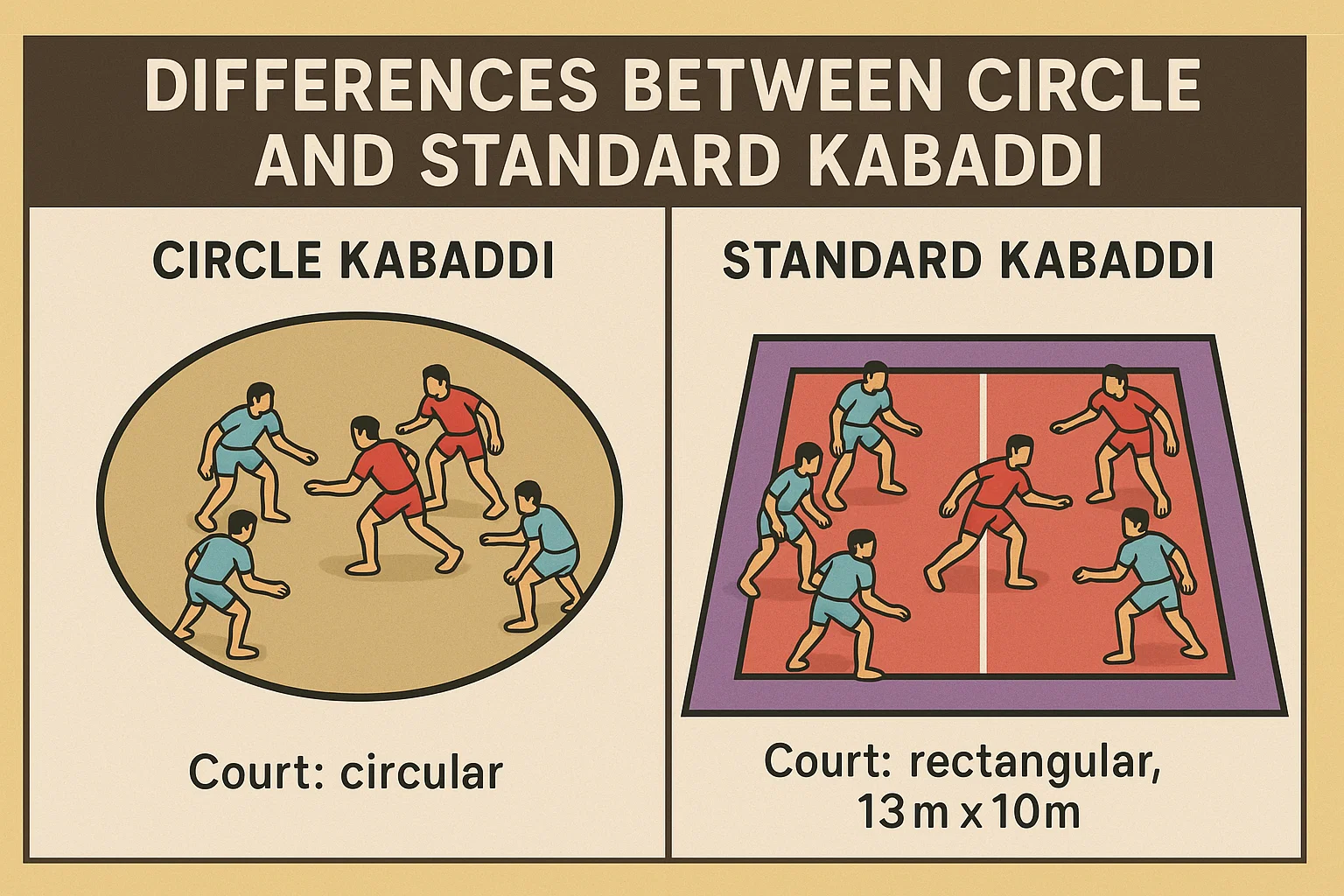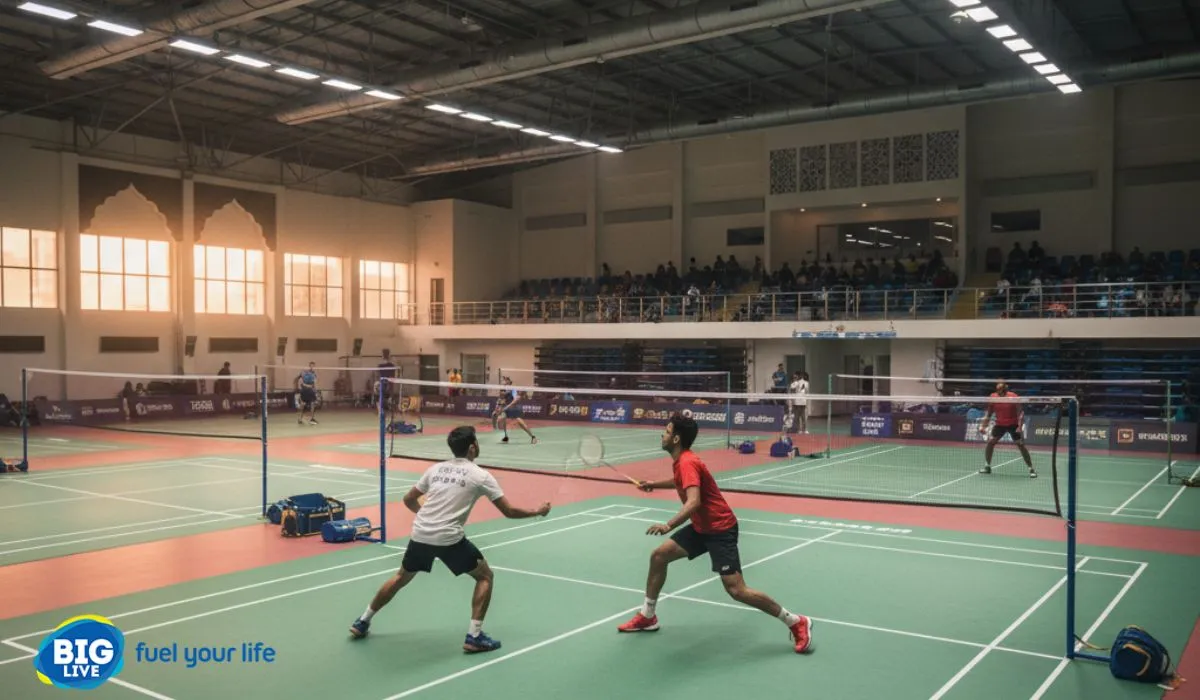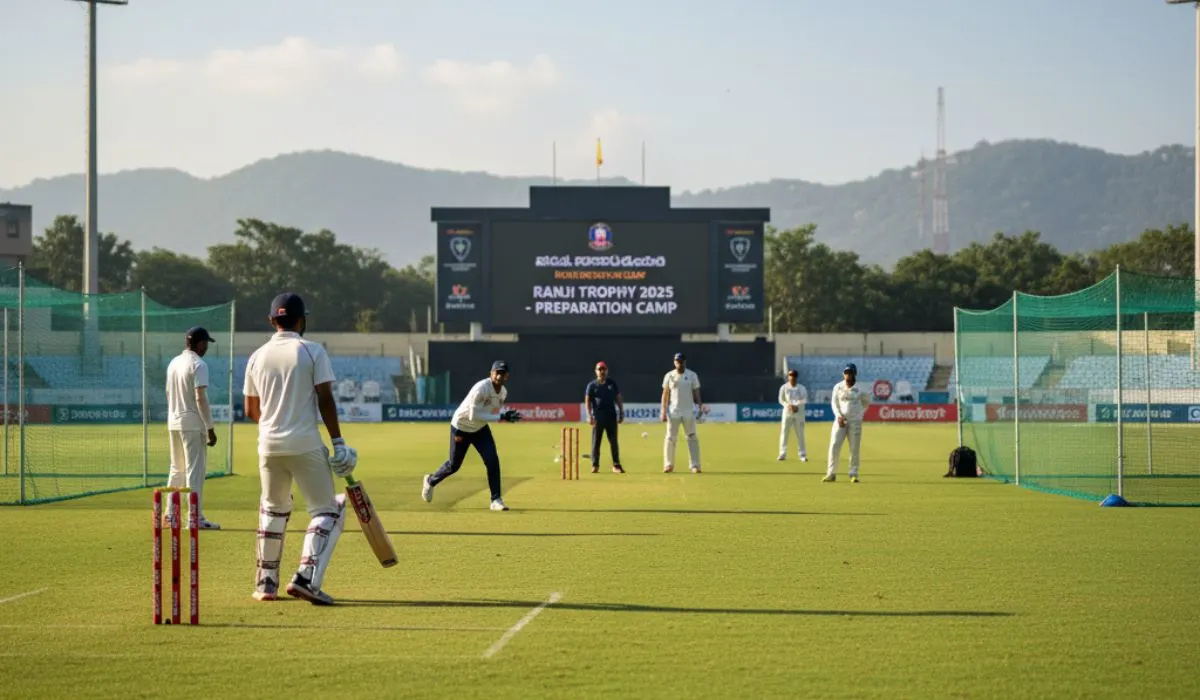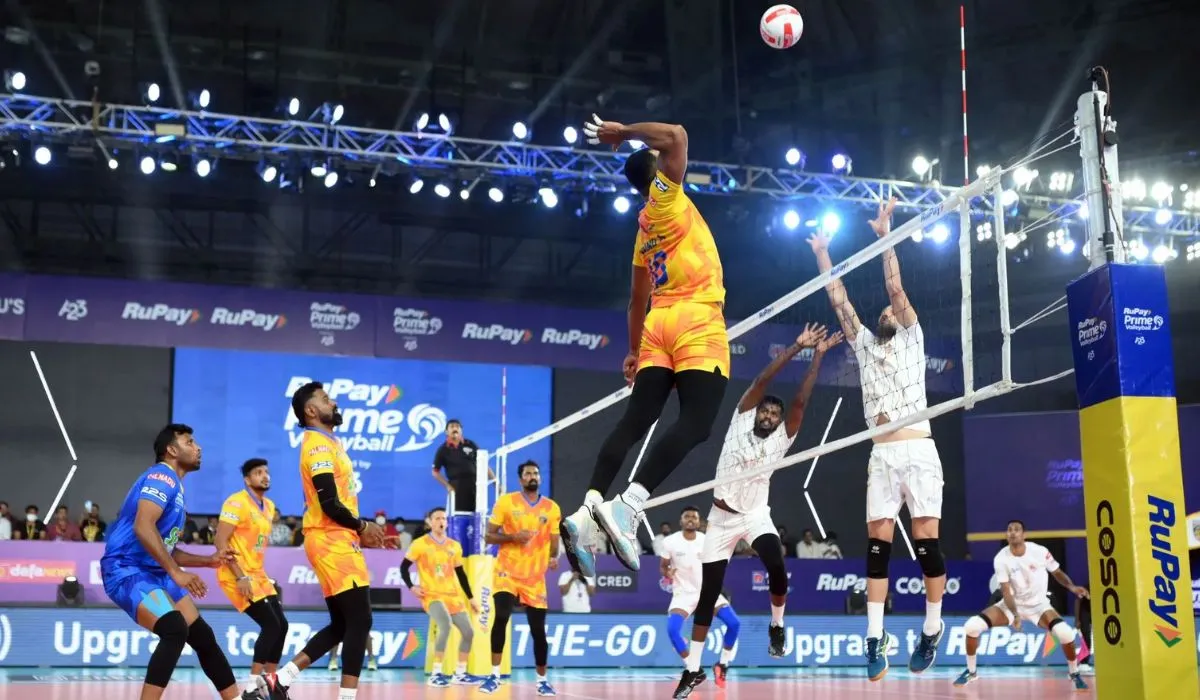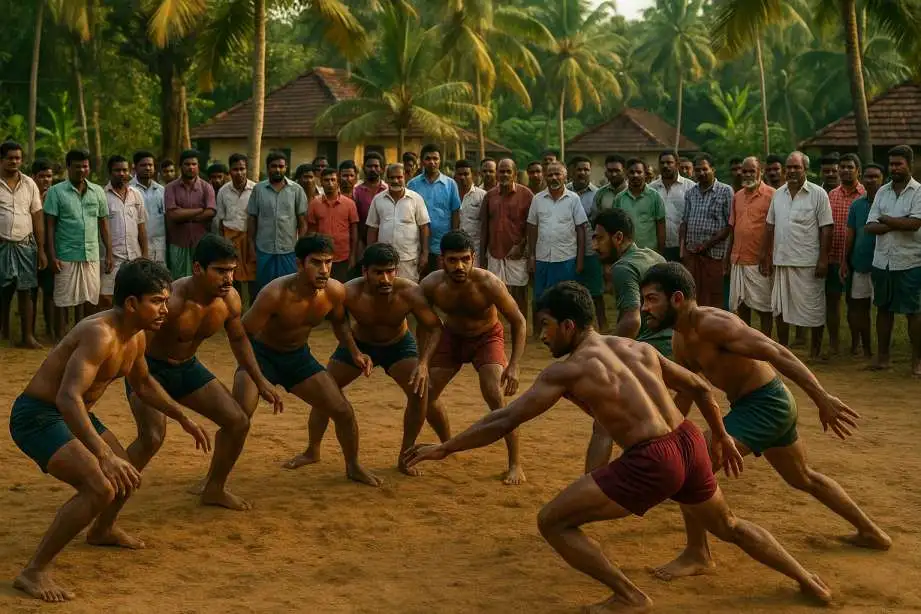I've been watching and playing kabaddi for over 15 years, and I still get excited every time I see a good match! This sport has captured my heart like no other. Today, I want to share something really cool with you - the differences between circle and standard kabaddi. Most people think kabaddi is just one game. But guess what? There are actually different styles played around the world! It's like having different flavors of your favorite ice cream. Each one tastes great, but they're all unique in their own way. Let me take you on this fun journey to explore these two amazing kabaddi styles!
What Makes Kabaddi So Special?
Before we dive into the differences, let me tell you why I love this sport so much. Kabaddi is like a mix of tag, wrestling, and chess all rolled into one game. You need to be fast, strong, and super smart. I remember my first kabaddi match. I was so nervous! But once I stepped on that court, everything clicked. The energy, the crowd cheering, the teamwork - it was magical. The best part? You don't need fancy equipment. Just a court, some friends, and lots of energy!
Key Differences Between Circle And Standard Kabaddi Formats
Now, let's talk about the main event - the differences between circle and standard kabaddi. These two styles are like cousins in the same family. They share the same DNA but have their own personalities.
Playing Area Shape and Size
The biggest difference I notice right away is the playing area. Standard kabaddi uses a rectangular court that looks like a big rectangle. It's 13 meters long and 10 meters wide. Think of it like a basketball court but smaller. Circle kabaddi, on the other hand, uses a round playing area. It's like a big circle drawn on the ground. The circle is usually about 22 meters across. When I first saw circle kabaddi, I thought, "Wow, this looks so different!"
Team Formation and Player Positions
In standard kabaddi, teams line up on opposite sides of the court. It's like two armies facing each other across a battlefield. Each team has 7 players on the court at one time. Circle kabaddi is totally different. All players from both teams stand around the edge of the circle. It's like everyone is holding hands around a campfire, but instead of singing songs, they're ready to play kabaddi!
Circle Style Kabaddi Rules vs Standard Format
The rules are where things get really interesting. Let me break this down for you:
Standard Kabaddi Rules:
- One raider crosses to the other side
- Defenders try to catch the raider
- Raider tries to tag defenders and return
- Points are scored for successful raids or catches
Circle Style Rules:
- Raiders start from the center of the circle
- All defenders stand around the circle edge
- The raider tries to break through the circle
- Defenders work together to stop the raider
I've played both styles, and let me tell you - they feel completely different!
Understanding Standard Kabaddi Format
Standard kabaddi is what most people see on TV. It's the style used in the Pro Kabaddi League and international competitions. I've watched hundreds of these matches, and they never get boring!
Court Layout and Boundaries
The standard court has clear lines everywhere. There's a center line that divides the court into two halves. Each half belongs to one team. There are also baulk lines and bonus lines that create different zones. When I explain this to kids, I tell them to imagine their bedroom. One half belongs to them, and the other half belongs to their sibling. The middle is like a fence that separates both sides.
Game Duration and Timing
Standard kabaddi matches have two halves. Each half lasts 20 minutes. That's 40 minutes of non-stop action! There's also a 5-minute break between halves. During my playing days, those 20 minutes felt like both forever and no time at all. When you're winning, time flies. When you're losing, every second feels like an hour!
Scoring System in Standard Format
Points in standard kabaddi are pretty straightforward:
- Successful raid = 1 point
- Catch a raider = 1 point
- Bonus point = 1 extra point
- All out = 2 extra points
I love how simple it is. Even my 8-year-old nephew can keep track of the score!
Indian Kabaddi Styles Comparison: Circle Format Deep Dive
Circle kabaddi is like the wild cousin of standard kabaddi. It's more traditional and has roots that go way back in Indian history.
Circle Formation and Player Arrangement
Picture this: 20 players standing in a big circle, holding hands. The circle is like a human chain. In the middle, there's empty space where all the action happens. The first time I saw this formation, I was amazed. It looked like an ancient ritual or ceremony. But then the whistle blew, and chaos broke loose!
Unique Rules of Circle Kabaddi
Circle kabaddi has some rules that will blow your mind:
- Raiders start from the center
- They can go in any direction
- Defenders can't leave the circle boundary
- The raid continues until the raider is caught or escapes
Gameplay Dynamics in Circle Style
The energy in circle kabaddi is incredible. Since everyone is in a circle, the action can happen anywhere. As a defender, you never know where the raider will come at you. I remember playing circle kabaddi at a village tournament. The crowd was sitting all around us in a bigger circle. Every time someone made a great move, the whole crowd would go wild!
Differences In Kabaddi Styles By Region
Here's something really cool - different parts of India play kabaddi differently!
North Indian Kabaddi Variations
In Punjab and Haryana, they love their kabaddi tough and physical. The players are usually bigger and stronger. The style is more aggressive, with lots of power moves. I've played with teams from Punjab, and wow, they don't mess around! Every raid feels like a mini-battle.
South Indian Kabaddi Preferences
South Indian kabaddi is more about technique and speed. Players focus on quick movements and smart strategies. They're like chess masters who can also run really fast!
Eastern and Western Regional Styles
Eastern states like West Bengal have their own twist on kabaddi. They mix traditional moves with modern techniques. It's like fusion cooking but for sports! Western states often follow the standard format more closely, especially in organized tournaments.
Equipment and Infrastructure Differences
One thing I love about both styles is how simple they are to set up.
Court Requirements for Each Style
Standard kabaddi needs a proper rectangular court with painted lines. You need goal posts, proper markings, and sometimes even electronic scoreboards. Circle kabaddi? Just draw a circle on the ground! I've seen amazing circle kabaddi matches played in village squares, school playgrounds, and even on beaches.
Safety Considerations
Both styles are generally safe, but they have different safety needs. Standard kabaddi has out-of-bounds areas where players can get hurt. Circle kabaddi keeps everyone contained within the circle.
Player Skills and Strategies Comparison
The skills needed for each style are similar but also different.
Raiding Techniques Across Formats
In standard kabaddi, raiders need to be great at straight-line attacks and quick turns. It's like being a race car driver on a straight track. Circle kabaddi raiders need 360-degree awareness. They're like helicopter pilots who can move in any direction at any time.
Defensive Strategies in Both Styles
Standard kabaddi defense is about creating walls and chains. Defenders work together to block escape routes. Circle kabaddi defense is about maintaining the circle integrity. It's like being part of a human fence that can't have any gaps.
Cultural and Historical Context
Both styles have rich histories that make me proud to be part of this sport.
Traditional Roots of Circle Kabaddi
Circle kabaddi is older than standard kabaddi. It comes from ancient Indian games played in villages for hundreds of years. My grandfather told me stories about circle kabaddi tournaments that lasted for days!
Modern Evolution of Standard Format
Standard kabaddi was developed to make the sport more TV-friendly and organized. It's helped kabaddi become an international sport. Both styles are important. Circle kabaddi keeps our traditions alive, while standard kabaddi helps the sport grow worldwide.
Which Style Should You Try?
This is a question I get asked a lot!
Beginner Recommendations
If you're just starting, I suggest trying standard kabaddi first. The rules are clearer, and there are more opportunities to play organized matches. But don't ignore circle kabaddi! It's incredibly fun and will improve your overall game awareness.
Skill Development Benefits
Standard kabaddi teaches you discipline, structured play, and team coordination. Circle kabaddi develops creativity, quick thinking, and adaptability. I always tell young players to try both. Each style teaches you something different.
The Future of Both Kabaddi Formats
I'm excited about where both styles are heading!
Growing Popularity Worldwide
Standard kabaddi is spreading to countries like Iran, South Korea, and even some European nations. It's amazing to see people from different cultures falling in love with our sport. Circle kabaddi is also gaining attention as people look for traditional and authentic sports experiences.
Tournament Opportunities
There are more tournaments than ever for both styles. Whether you prefer the structure of standard kabaddi or the chaos of circle style, there's a place for you to compete.
My Personal Kabaddi Journey
Let me share a quick story that shows why I love both styles. Last year, I played in a tournament that had both standard and circle kabaddi events. In the morning, we played standard format. It was intense, strategic, and required perfect teamwork. In the evening, we switched to circle kabaddi. Suddenly, the same players who were methodical in the morning became wild and creative. It was like watching artists switch from drawing straight lines to creating abstract art! That day, I realized both styles bring out different parts of our kabaddi personality.
Conclusion: Embracing Both Kabaddi Worlds
After years of playing, coaching, and watching kabaddi, I can tell you this - both circle and standard kabaddi are treasures. Standard kabaddi gives us structure, organization, and global recognition. It's helped our beloved sport reach the Olympics discussion table and gain international respect. Circle kabaddi keeps our roots strong and our traditions alive. It reminds us where we came from and maintains the raw, authentic spirit of the game. The differences between circle and standard kabaddi aren't about which one is better.
They're about celebrating the diversity and richness of our sport. It's like having two different but equally delicious dishes from the same kitchen. My advice? Don't choose sides. Embrace both! Play standard kabaddi when you want structure and competition. Play circle kabaddi when you want freedom and tradition. Whether you're standing in a rectangle or a circle, you're part of the amazing kabaddi family. And that's something really special. So grab your friends, find a space, and start playing. Whether it's circle or standard, kabaddi will change your life just like it changed mine!



